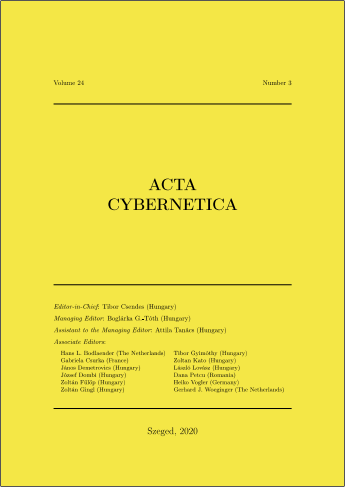From Verified Parameter Identification to the Design of Interval Observers and Cooperativity-Preserving Controllers
An Experimental Case Study
DOI:
https://doi.org/10.14232/actacyb.24.3.2020.13Keywords:
interval analysis, verified parameter identification, interval observers, cooperative system dynamics, interval-based feedback controlAbstract
One of the most important advantages of interval observers is their capability to provide estimates for a given dynamic system model in terms of guaranteed state bounds which are compatible with measured data that are subject to bounded uncertainty. However, the inevitable requirement for being able to produce such verified bounds is the knowledge about a dynamic system model in which possible uncertainties and inaccuracies are themselves represented by guaranteed bounds. For that reason, classical point-valued parameter identification schemes are often not sufficient or should, at least, be handled with sufficient care if safety critical applications are of interest. This paper provides an application-oriented description of the major steps leading from a control-oriented system model with an associated verified parameter identification to a verified design of interval observers which provide the basis for the development and implementation of cooperativity-preserving feedback controllers. The corresponding computational steps are described and visualized for the temperature control of a laboratory-scale test rig available at the Chair of Mechatronics at the University of Rostock.







